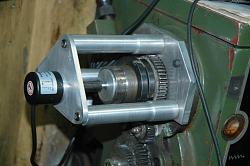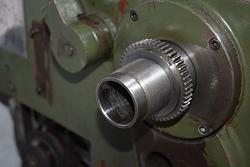
Originally Posted by
metric_taper

Tony, what I would like to do, is put an encoder on the spindle, and one on the main feed screw, and fix the timing as the thread dial has shown to be wrong either for metric or Imperial threads. What I do now, is keep the half nut engaged, and reverse the lathe. This gets tiresome. So I'm thinking I can set up an Arduino with the two encoder inputs, and have it give me an engage light when they are timed for the start of a thread. I have not thought this through with all the gearing and such, but this seems like it would enable reliable half nut engagement, so I don't start new threads in the part.


 LinkBack URL
LinkBack URL About LinkBacks
About LinkBacks



 Reply With Quote
Reply With Quote




Bookmarks